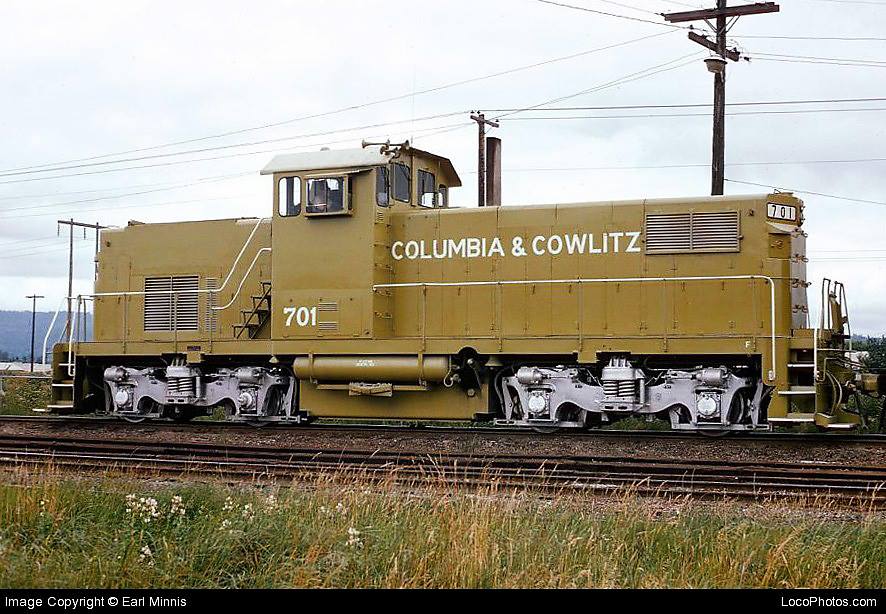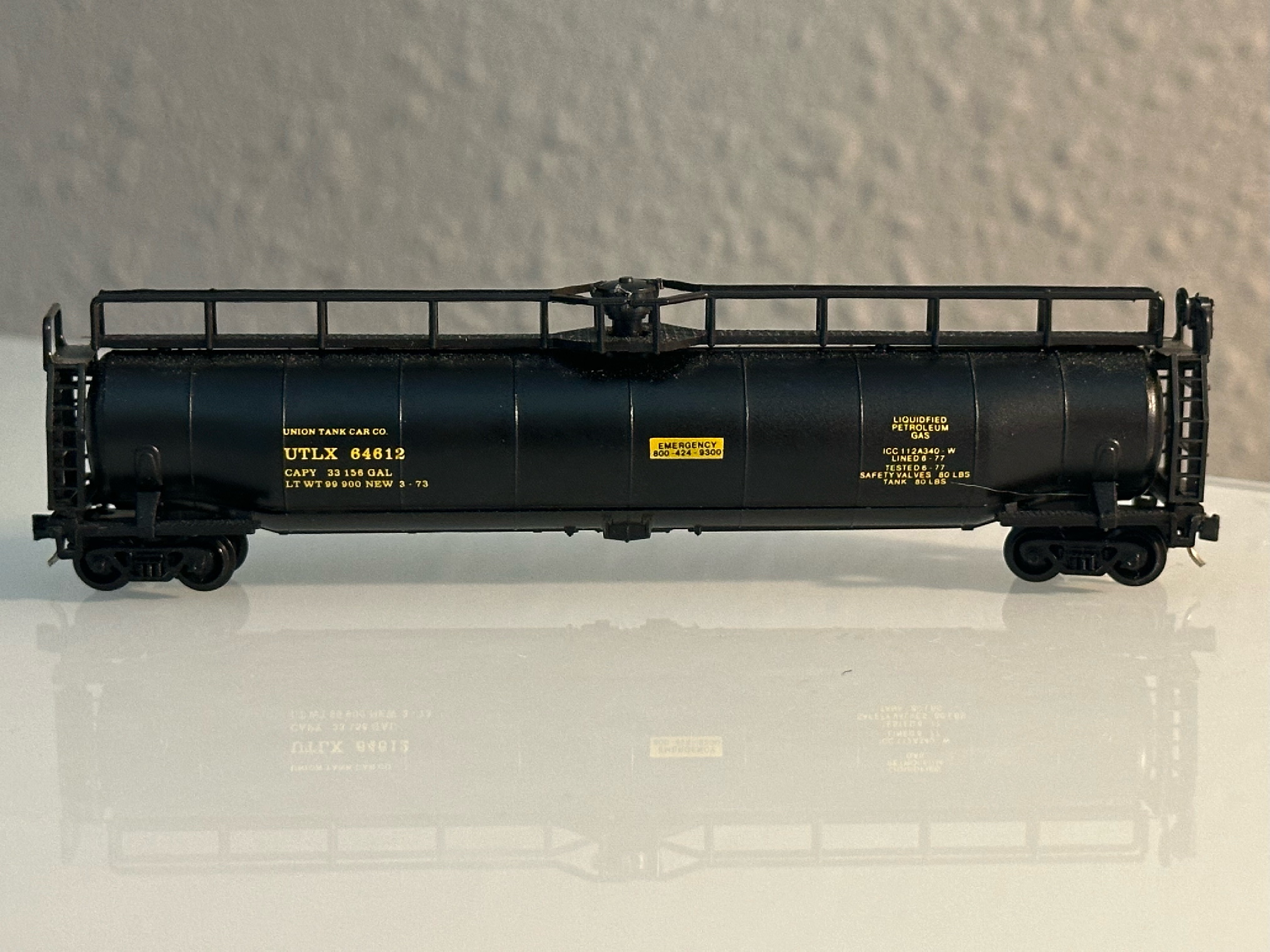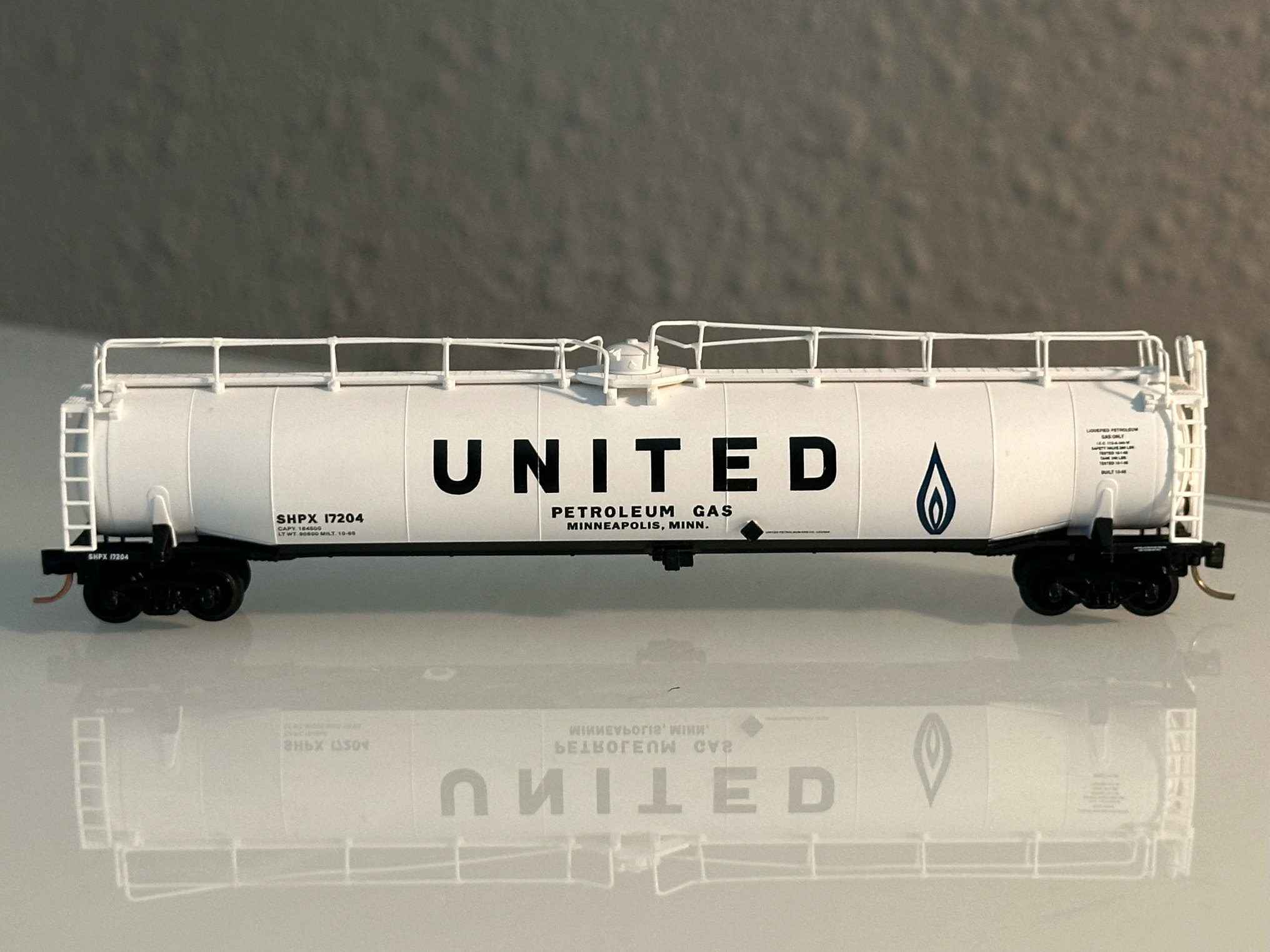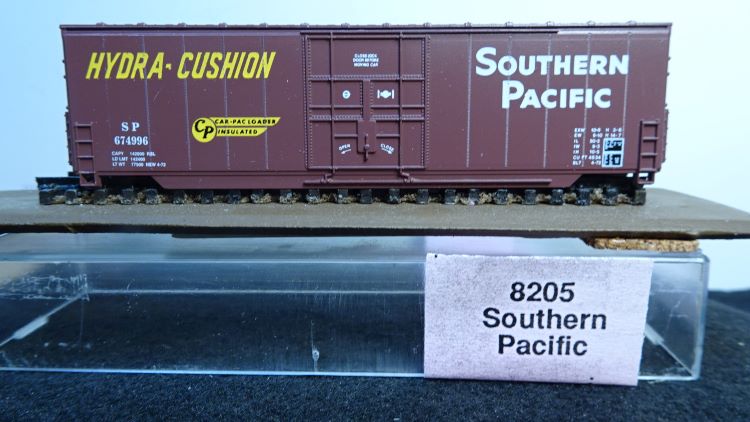Model Information: Boxcar, 50 Foot, Offset Double Sliding Door, Rib Side, Without Roofwalk, FMC. Originally designed by MDC Roundhouse, this tooling was acquired by Athearn in June of 2004. It has since been re-released with Accumate and/or McHenry couplers. This body style has two doors offset from center of the car.
Current versions features: Scale profile brake wheel; Roller bearing trucks; Fully-assembled and ready-to-run out of the box; Accurately painted and printed; Highly detailed, injection molded body; Machined metal wheels; Screw mounted trucks; McHenry knuckle couplers; Weighted for trouble free operation; Clear plastic jewel box for convenient storage; Operates on Code 55 and 80 rail; Minimum radius: 9-3/4".
Current versions features: Scale profile brake wheel; Roller bearing trucks; Fully-assembled and ready-to-run out of the box; Accurately painted and printed; Highly detailed, injection molded body; Machined metal wheels; Screw mounted trucks; McHenry knuckle couplers; Weighted for trouble free operation; Clear plastic jewel box for convenient storage; Operates on Code 55 and 80 rail; Minimum radius: 9-3/4".
Prototype History: In the 1970's with the growth of the Per Diem business model, FMC produced a series of 50 foot box cars in different configurations. The single-sliding-door configuration is one of the best known and used widely by many different railroads. These cars were produced using the Gunderson metal works which FMC had acquired in 1965. In late 1975, FMC began producing a 5,077-cubic-foot Plate B box car for IPD and Railbox service. FMC's 5077s have seven panels to either side of the 10-foot door, an X-panel roof, and non-terminating ends that are slightly different from those used on FMC's earlier cars. Note how the sidesill is notched all the way back to the bolsters, a key feature of FMC's mature design.
The main difference between the 5077 cu. ft cars built by FMC vs the 5277-5347 cu. ft cars built by the same manufacturers is the overall height of the car, the smaller 5077 cars were Plate B while the larger 5277-5347 cars were Plate C. Over 4,300 cars were produced from 1975-1979 by FMC's Portland, Oregon plant. The cars were delivered in numerous colorful shortline paint schemes, as well as the nationwide car pool fleet of Railbox. Many secondhand cars were later seen in Class 1 railroads and large leasing company fleets under additional shortline reporting marks.
The main difference between the 5077 cu. ft cars built by FMC vs the 5277-5347 cu. ft cars built by the same manufacturers is the overall height of the car, the smaller 5077 cars were Plate B while the larger 5277-5347 cars were Plate C. Over 4,300 cars were produced from 1975-1979 by FMC's Portland, Oregon plant. The cars were delivered in numerous colorful shortline paint schemes, as well as the nationwide car pool fleet of Railbox. Many secondhand cars were later seen in Class 1 railroads and large leasing company fleets under additional shortline reporting marks.
Road Name History:  The CLC was built between 1926 and 1928 by Weyerhaeuser to link their large mill in Longview, Washington to the railhead at Kelso. Though the line is less than 10 miles long, traffic has been considerable and the line’s fleet of freight cars has been quite large over the years. Weyerhaeuser sold the CLC to shortline group Patriot Rail in 2010 along with the adjoining Weyerhaeuser Woods Railroad (now called Patriot Woods.) Today, the two lines are operated together.
The CLC was built between 1926 and 1928 by Weyerhaeuser to link their large mill in Longview, Washington to the railhead at Kelso. Though the line is less than 10 miles long, traffic has been considerable and the line’s fleet of freight cars has been quite large over the years. Weyerhaeuser sold the CLC to shortline group Patriot Rail in 2010 along with the adjoining Weyerhaeuser Woods Railroad (now called Patriot Woods.) Today, the two lines are operated together.

Brand/Importer Information:  MDC Roundhouse was founded in California in 1938 and relocated in 1993 to Carson City, Nevada due to statewide restrictions on painting. MDC Roundhouse was a producer of both RTR (Ready-to-Run) and kit versions of N Scale rolling stock as well as RTR locomotives. They entered the N scale market in 1979 with a Thrall Hi-Side Gondola and a Hi-Cube Single Door Box Car. MDC Roundhouse was purchased by Horizon Hobbies in June of 2004, when its owner since 1938 C. H. Menteer retired, and merged into their Athearn line.
MDC Roundhouse was founded in California in 1938 and relocated in 1993 to Carson City, Nevada due to statewide restrictions on painting. MDC Roundhouse was a producer of both RTR (Ready-to-Run) and kit versions of N Scale rolling stock as well as RTR locomotives. They entered the N scale market in 1979 with a Thrall Hi-Side Gondola and a Hi-Cube Single Door Box Car. MDC Roundhouse was purchased by Horizon Hobbies in June of 2004, when its owner since 1938 C. H. Menteer retired, and merged into their Athearn line.
Unlike many of their contemporaries which contracted with European firms to produce their products, MDC made their own toolings. They made several popular body styles and produced them for road names that many other vendors (even Micro-Trains) wouldn't touch. This made them popular with modelers. Also, their un-assembled "kits" permitted a lower price point so they were popular with "runners" as well as "modelers".
Of particular interest was the attention given to modern 50 foot steel boxcars. They made some attempt to accurately mold the differences into distinct models to represent each of the major prototype manufacturers products. They have distinct toolings not only for the different products from FMC, BFF and PS, but also multiple models for each of these manufacturers including "standard" vs "Youngstown" doors and "waffle" vs. "rib" sides. In total they produced 13 different versions of the 50 foot steel boxcar.

Unlike many of their contemporaries which contracted with European firms to produce their products, MDC made their own toolings. They made several popular body styles and produced them for road names that many other vendors (even Micro-Trains) wouldn't touch. This made them popular with modelers. Also, their un-assembled "kits" permitted a lower price point so they were popular with "runners" as well as "modelers".
Of particular interest was the attention given to modern 50 foot steel boxcars. They made some attempt to accurately mold the differences into distinct models to represent each of the major prototype manufacturers products. They have distinct toolings not only for the different products from FMC, BFF and PS, but also multiple models for each of these manufacturers including "standard" vs "Youngstown" doors and "waffle" vs. "rib" sides. In total they produced 13 different versions of the 50 foot steel boxcar.
Item created by: gdm on 2017-05-24 07:09:02. Last edited by CNW400 on 2020-09-25 16:16:01
If you see errors or missing data in this entry, please feel free to log in and edit it. Anyone with a Gmail account can log in instantly.
If you see errors or missing data in this entry, please feel free to log in and edit it. Anyone with a Gmail account can log in instantly.









